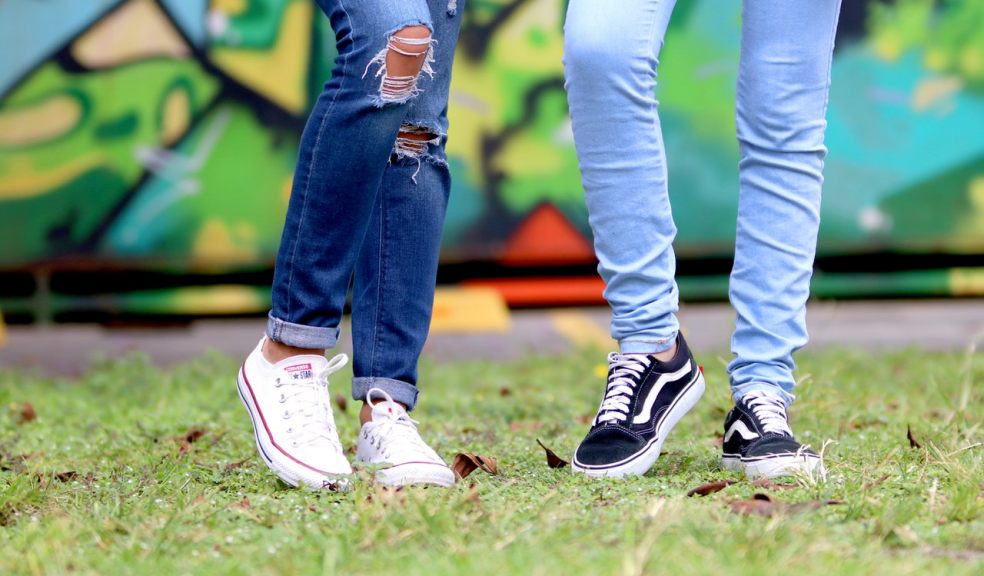
How our thirst for budget clothing is destroying the environment
In recent years, the demand for fast, affordable clothing has skyrocketed. Bucking the on-going decline of the traditional high street, budget stores such as Primark have thrived through offering discount lines and cheap clothing brands. It seems we just can’t get enough of bargain clothes.
Our throwaway culture has driven a new market of one-time-wear fashion. However, this same disposable attitude to clothing could be having long-lasting effects on the environment and cheap, plastic-based clothing is now starting to have a real impact on climate change and global pollution.
Low-cost clothing is invariably produced using a combination of synthetic fibres mixed with natural materials. Melding traditional, biological fabrics such as wool and cotton with man-made fabrics such as nylon has become the go-to for many fashion brands as a way to reduce the cost of clothing production.
The ecological impact of plastic-based clothing
Plastic pollution is wreaking havoc on our planet. Synthetic fibres such as nylon can take up to 40 years to decompose (some plastics take up to 1,000 years). However, beyond the disposal issues of plastic, even washing plastic-based clothing can transfer unnatural microfibres.
It’s estimated up to 64% of new fabrics contain plastic fibres. These fibres are so tiny, they can’t be caught by our washing machine filters and so pass directly into the water supply – and eventually, the world’s oceans.
One washing machine load of clothing could transfer up to 17 million tiny plastic fibres into the water supply.
Let that sink in. 17 million fibres.
Worse still, the fibres released into the open environment are capable of absorbing harmful chemicals. With time, they can also be ingested by sea creatures and gradually make their way up the food chain. That delicious fish platter on tonight’s menu may well contain these very same fibres and high levels of plasticity. It’s a sobering thought.
Plastics in clothing
Plastics begin life as natural materials such as gas, oil or plants, and are then refined into ethane or propane. In total, 99% of all plastics are derived from fossil fuels. Through a secondary treatment called “cracking”, they are then transformed into ethylene or propylene, which then are combined to produce different polymers.
Plastics are ridiculously cheap to produce – far cheaper than natural fibres. While we often think of plastic as a hard substance used to produce drinking bottles and the like, actually, it’s a highly versatile material that has any number of uses.
Through the ingenuity of cost-cutting and mass-production, many companies have now started combining plastics in their clothing production process. The end result? The cheap, throwaway clothing that has become a staple of many of our most popular brands.
Of course, some figure-hugging items of clothing like tights or close-fitting swimwear simply couldn’t be produced without synthetic fibres, but plastic is now starting to feature in all manner of clothing – everything from jumpers to jeans and jackets – and is used as a way to reduce costs and quicken production.
Some facts about plastic
The facts about plastic are truly overwhelming. While we may all consider ourselves relatively plastic-aware, when you delve deeper into the statistics, they make for worrying reading:
- Over the last ten years, more plastic bags have been produced than during the entire last century
- More than one million plastic bags are used every minute – totalling over 500 million bags every year
- More than 90% of seabirds have been found to have plastic-based derivatives in their stomachs – most of it through microfibres
- Plastics are killing more than one million sea-faring birds and animals every year – again, mostly caused through ingesting microfibres
- On average, people eat more than 70,000 microplastics per year
While most of this plastic pollution can be attributed to larger products such as plastic bottles or bags, it transpires that clothing is now proving to be one of the most active contributors. Most people simply aren’t aware of how plastic is used in the production of their everyday wardrobe items.
How ingesting plastic can affect our health
Plastics aren’t just bad for the environment – they’re bad for the human body, too. As plastic pollution increases and makes its way through the food chain, we are increasingly being exposed to plastics in the food we eat. As one might expect, ingesting microplastics can have a dramatic impact on our health as our bodies simply aren’t adapted to eating or breathing in unnatural substances. However, worse still, plastics are, by nature, highly absorbent and can also transfer additional toxins to the body, vastly increasing the risk they pose to our health.
Eating or breathing plastic substances can cause inflammation, apoptosis, necrosis, genotoxicity and oxidative pressure in the body. In turn, these conditions can lead to far more dangerous illnesses, including (but not limited to):
- Strokes
- Cancers
- Inflammatory bowel conditions and diseases
- Diabetes
- Neuro-degenerative disease
- Chronic inflammation
- Auto-immune complaints
- Cardiovascular disease
- Strokes
The small steps we can all take could make a big difference
As with most aspects of environmental change, the key is awareness and education. Items such as plastic bags and bottles are easy to spot – and very simple to avoid – however, with clothing, it can be a very different story. That said, just taking a cursory look at clothing labels can give a clue as to how the item was made and what materials were used in its production.
If you want to make a real difference to the environment and the issue of plastic pollution, check labels for unnatural-sounding fibres. By choosing a sustainable clothing brand, you can do your bit for the environment while still buying fashionable clothing.
Even the bigger brands are starting to wake up to the pressure exerted by their consumers. Global leaders such as Levis have now started producing eco-friendly jeans, expressly stipulating their environmental credentials on their labels. Voting with your wallet is the best way to force brands to change their production processes.
Plastic in clothing – the future
While demand remains high for cheap clothing, manufacturers are unlikely to change their production processes – or the materials they use.
Governments around the world are, thankfully, beginning to wake up to the impending climate catastrophe that faces the human race, but authoritarian pressure isn’t enough. We – all of us – have our own unique part to play in mitigating the impending climate emergency. Being aware and conscious of the choices we make and the brands we choose will go a long way to helping provide a solution to climate change and pollution.














